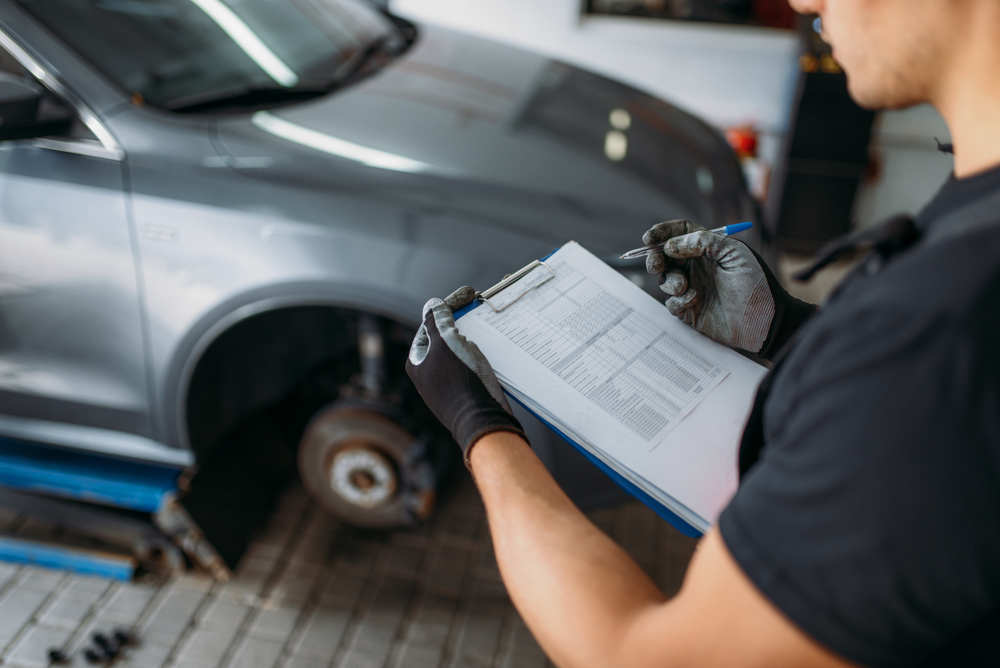When you take your car to an auto body repair shop in New Jersey after a collision, you anticipate that it will return to you in its pre-accident condition. While your car might look good as new on the outside, you should not neglect doing a post-repair quality check to make sure. A thorough inspection of the work can save you from future problems later on. Let’s discuss what you shouldn’t overlook during the post-repair check, so you know what to look for.
Key Takeaways
- Inspect the color match, gloss level, and surface texture to ensure a seamless finish. Inconsistent paint can affect both aesthetics and protection against environmental damage.
- Verify proper alignment and secure fitting of all structural components. Misalignment can lead to uneven tire wear, poor handling, and reduced fuel efficiency, compromising safety.
- Test all safety features such as airbags, backup cameras, and parking sensors to ensure they are functioning correctly. Proper operation of these features is crucial for vehicle safety.
- Take the vehicle for a test drive to detect unusual noises, vibrations, or performance issues. Report any concerns to the repair shop to ensure that all repairs were completed thoroughly and safely.
Paint and Finish
After any bodywork or paint job, it’s crucial to closely inspect the paint and finish. Begin by examining the color to ensure it matches the rest of your vehicle. Even slight differences in shade can be noticeable and affect your car’s appearance. Pay attention to the gloss level as well; the newly painted areas should have a uniform sheen compared to the original paint.
Additionally, feel the surface for rough textures or uneven areas. High-quality paintwork should be smooth to the touch, without any bumps or irregularities. Inconsistent or poorly applied paint can not only diminish the visual appeal of your vehicle but also impact its ability to resist environmental damage, such as rust or corrosion.
Alignment and Structural Integrity
Proper alignment and structural integrity are critical for your vehicle’s performance and safety. After repairs, especially those involving collisions or structural work, ensure that the alignment is precisely adjusted. Misalignment can lead to uneven tire wear, which affects driving comfort and safety. It can also reduce fuel efficiency due to increased rolling resistance. Also, check that all structural components, including frames, panels, and body parts, are correctly aligned and securely fastened. Any misalignment or loose parts can compromise the vehicle’s safety by affecting its crashworthiness and overall handling.
Functionality of Safety Features
Modern vehicles are equipped with advanced safety features that require proper functionality to ensure your safety on the road. After repairs, particularly those that involve the front or rear of the vehicle, it’s important to verify that all safety features are operational. Test critical components like airbags, backup cameras, parking sensors, and collision avoidance systems to ensure they are responding correctly. Any malfunctioning safety feature can be a significant risk and may not perform as intended in an emergency situation. Ensuring these features are working properly contributes to the overall safety of your vehicle.
Water Leaks
Water leaks can be a common issue if seals or weather stripping were not properly replaced or installed during repairs. Inspect the areas around the windshield, doors, and trunk for any signs of water ingress, especially after a rainstorm or car wash. Check for dampness, water stains, or pooling inside the vehicle. Persistent leaks can lead to interior damage, such as rusting of metal parts, mold growth, and unpleasant odors. Addressing these leaks promptly can prevent more severe damage and ensure a comfortable and dry interior.
Unresolved Issues
After receiving your repaired vehicle, take it for a test drive to detect any unusual noises, vibrations, or performance issues. Listen carefully for any sounds that were not present before the repair, such as squeaks, rattles, or clunks. Pay attention to how the vehicle handles, accelerates, and brakes, particularly if any parts were replaced or adjusted. Any deviations from normal performance could indicate unresolved issues or incomplete repairs.
Be sure to mention these issues to the repair shop where you had the work done. They should have no problem double-checking their work, especially if the unresolved issue will impact the safety of your vehicle.
Contact a Reputable Auto Repair Shop in South Jersey Today
Post-repair checks may seem like something you can gloss over, but you should be double-checking the work done to ensure your vehicle will perform optimally. By carefully inspecting the paint, alignment, safety features, seals, and overall performance, you can catch any overlooked issues and ensure your vehicle is in top condition. At Elmer’s Auto Body in Sewell, NJ, we prioritize thorough repairs and use OEM parts. Contact one of our three locations in South Jersey today to schedule your repairs. We will walk you through what we have done when you come for pick, so you can see the quality of our work yourself.

